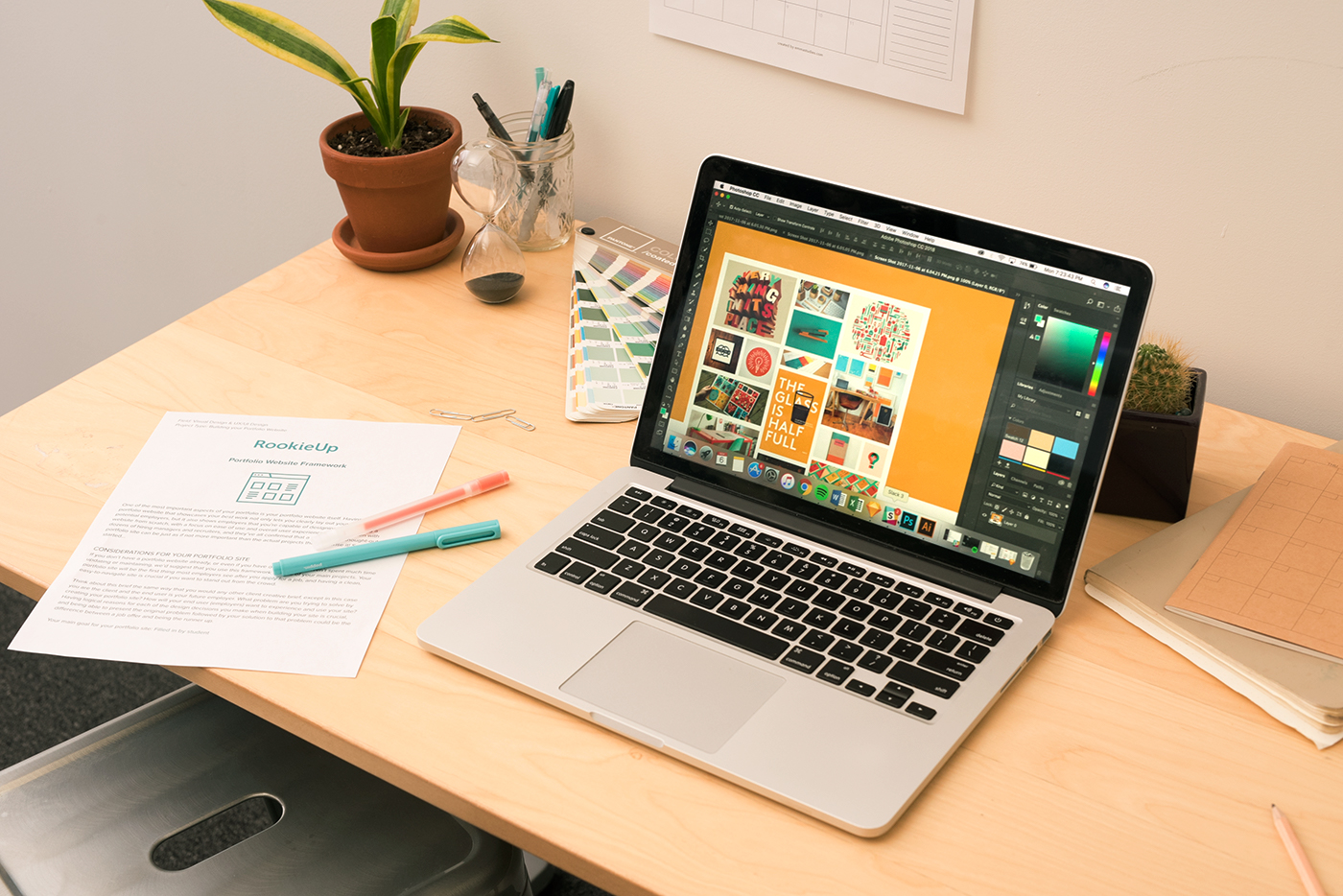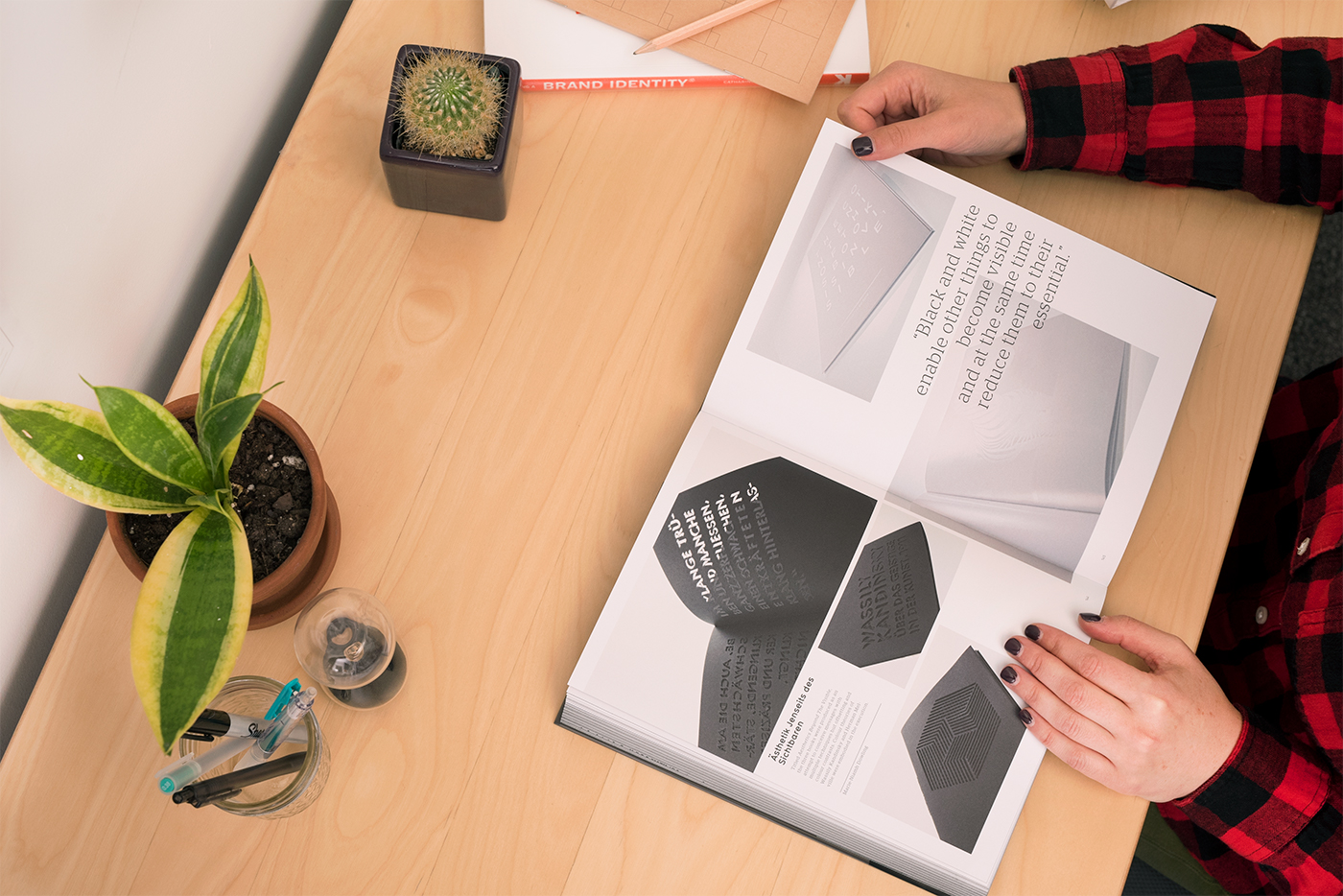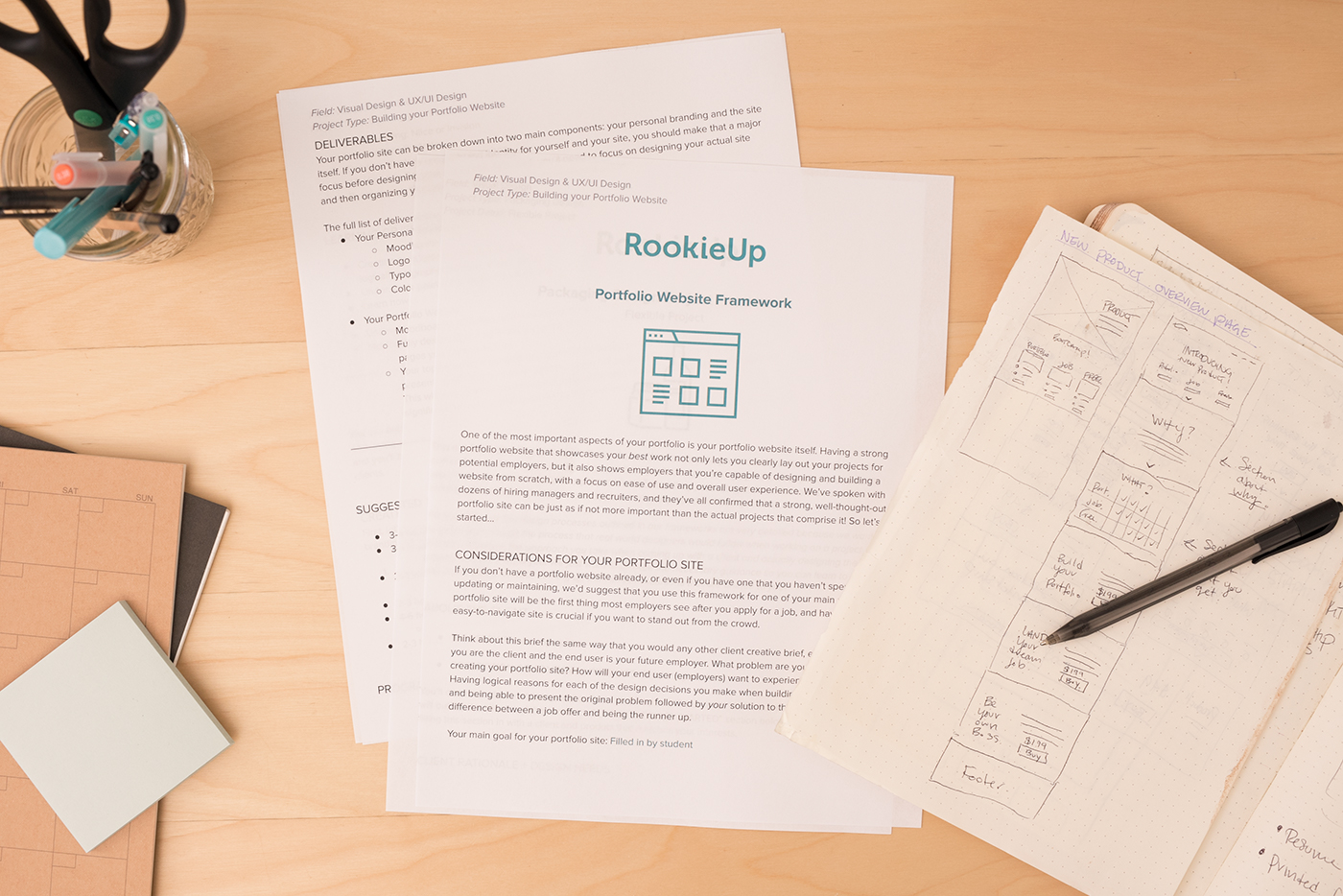by Alec McGuffey
If you’ve started learning design skills with the hopes of launching a career in the creative industry, you probably already know that your portfolio is the most important tool in your arsenal as you get ready to apply to jobs or look for clients. But when you’re just starting to build up your portfolio, it can be difficult to know exactly what sorts of projects to work on to maximize your chances of getting a job in your desired field.
Over the past few months, we spoke with dozens of designers, hiring managers, and recruiters in the creative industry to find out exactly what types of projects they want to see in the portfolios of junior and mid-level designers applying for Visual Design and UX/UI Design jobs. We also worked with them to figure out what makes a portfolio truly impressive. In this article, we’re going to outline how to build projects that stand out to employers and let you practice doing the types of work you’d be doing once you land your first design job. And feel free to check out our design portfolio projects if you want more help building an amazing portfolio that will help you get a job!
Choose your design speciality and expertise
Regardless of whether you’re trying to break into Visual Design or UX/UI Design, it’s crucial to think about what type of design work interests you the most and focus your portfolio around that work. The market for design jobs is incredibly competitive, and if you want to stand above the competition, it’s generally a good idea to specialize in one or two areas.
So if you like app design, focus on building app projects for your portfolio! Want to design websites? Focus on showcasing websites you’ve designed in your portfolio. Employers want to see that you have a deep expertise in whatever role you’re applying for, so having a specialized portfolio that primarily shows work you’ve done in that specific area is going to make you much more appealing than someone who doesn’t show any focus or specialty.
At the same time, this shouldn’t stop you from learning to be a well-rounded designer. Being able to to showcase that you understand broader design concepts is crucial as well, so working on projects in other fields is a great idea. If you’re focused on UX design, be sure to include a few projects that show that you have a strong grasp of typography, color theory, and other design principles (or at the very least, be sure your UX projects incorporate those principles). And if you’re trying to be a Visual Designer, be sure that at the very least, your portfolio website follows UX principles and is designed from a user-centered point of view.
Work on projects that solve real problems
It’s easy to look at design social media sites and think that employers only care about seeing beautiful splash pages, app screen mockups, and logos, but this isn’t true. One of the things recruiters have emphasized most is that they care most about seeing comprehensive projects that attempt to solve real problems rather than just seeing pretty visuals. They want to know that someone they’re hiring is a creative problem solver and understands how to design solutions to problems based on research and testing. There are a couple main directions you can go when coming up with ideas for projects based on real world problems.
Identify problems you want to solve
Make a list of industries you want to work in and the types of work you want to do (e.g. app design or branding & identity). Then spend time thinking about the main problems that you encounter when using products in those industries or when interacting with websites, apps, or brands in those spaces. Then think about how your specific design speciality (e.g. app design, branding, web design, etc.) could be used to solve that problem.
For example, if you’re an aspiring UX designer interested in the film industry, you might realize that there isn’t a great solution for discovering films to watch based on your tastes, so you could design an intuitive website that helps users find curated film recommendations. And if you want to build a career doing Branding in the ecommerce space, you might choose an existing ecommerce business whose logo and marketing don’t do a good job conveying their brand identity or value proposition. In that case, you could design a new brand identity for them, including a logo, iconography, textures, and style guide.
By focusing on solving problems with your portfolio projects, you’ll be simultaneously expanding your problem solving abilities, learning to think like a real designer, and showing employers that you can deliver real value to their company with your designs. You’ll also be differentiating yourself from a majority of other aspiring designers applying for the same jobs.
Create an actual side project
Employers love to see work that solves real problems and also like to see designers whose passion for design goes beyond their 9 to 5 job. One of the best ways to demonstrate both of these is by creating your own side project! Here are a few examples of the types of project ideas you might decide to work on:
- An educational website or newsletter with daily content for people in your field.
- Your own design agency website and marketing campaign.
- An ecommerce website where you sell prints of your work
- A set of digital textures and iconography you can sell on a design marketplace.
Not only is building your own side project and launching it into the world an incredible experience, but it will teach you how to design something, build it, and then improve upon once it’s live, all skills that are crucial if you want to succeed as a designer.
Find real world work
Recruiters love to see real client work in portfolios because it shows that you can work within real world constraints and as part of a team. While it might seem daunting to find client work early in your career, there are actually a lot of ways to find real projects to work on, even early in your career. You might not be able to get paid work when you’re just getting started (although you can ask), but the experience working with real clients is invaluable by itself.
- Local: One of the best ways to start looking for clients is by searching locally. Whether you live in a large city or small town, you’re likely surrounded by hundreds, if not thousands, of local businesses covering every possible type of industry or product you might be interested in. Check local listings or just walk into businesses near where you live! Ask them if they need any help with design projects such as a marketing campaign, website redesign, or rebranding. They’ll probably be thrilled for the support!
- Startups: Most startups are bootstrapped and generally don’t have anyone focused exclusively on design at first. Pitching to these companies not only lets you work on projects for exciting new companies, but it also creates valuable relationships that can lead to paid work and even full-time employment offers down the road. Check out startup launch sites like Product Hunt and reach out to newly launched startups.
- Nonprofits: Reaching out to nonprofits is another great idea for finding work. Nonprofits constantly have the need for design help to support new campaigns and initiatives, but their budget is likely best utilized for whatever cause they focus on. AIGA has a fantastic list of other organizations that pair designers with nonprofits for design projects.
Follow proper design processes
One of the main things employers told us is that most junior portfolios seem to fall into the trap of only showing pretty visuals, with no context behind their design decisions. When you’re getting started, it can be tempting to come up with an idea and then jump into Sketch or Photoshop right away. Don’t do this! The most important thing when working on projects is ensuring that you follow the design processes that you’d be following in the real world.
Instead, spend time researching the problem, creating personas and use cases, moodboarding, sketching and ideating, creating user flows, and only then moving onto actual wireframes and/or higher fidelity designs. This might seem counterintuitive at times, but you’ll be rewarded later when you can showcase your entire project on your portfolio site as a comprehensive case study and are able to speak to all of your design decisions in interviews.
Finally, it’s crucial to test your designs on others throughout the entire process. It can be easy to become attached to all of your designs if you’ve spent dozens of hours creating something, but reviewing your design projects as you go with a mentor or peer is a great way to get objective feedback from someone not attached to the project. For Visual Design projects, get feedback once you’ve sketched out early ideas and then also as you start to create higher fidelity versions of the projects. For UX work, also get feedback early on and then conduct multiple rounds of usability testing once you’ve created your first mockups or prototypes based on your wireframes.
Showcase your final projects beautifully
Instead of just showing the final beautiful visuals mocked up, you should be focused on showcasing your entire process from start to finish. Most employers aren’t interested in just seeing the end result—they want to know how you think. You should be showcasing:
- A brief overview of the project, including the client, the problem you were trying to solve, your approach, and any constraints you had to work within.
- Showcase the final designs mocked onto relevant devices or surfaces.
- Next, dive into your process, including research you conducted and your early designs (sketches, wireframes, and user flows)
- Discuss the main problems you faced, how you overcame them, and what the results were. Mention when and with whom you validated your decisions.
- Have a brief conclusion, including what you learned and what next steps are.
In Summation
It might seem like a lot of information to keep track of early in your design career, but just remember these few simple steps:
- Decide what area of design you want to specialize in and focus on deepening your expertise in that area while also continuing to study other areas of design to ensure you’re a well-rounded designer.
- Think of problems that exist in your target industries and figure out how your specific design focus can help to solve those problems.
- Follow the proper design process so your design decisions are well-researched and take feedback and user testing into account!
Once you’ve followed those steps, you’ll be in a great place and your portfolio will be well on its way to landing you a job. And if you want help learning how to build comprehensive problem-based projects that recruiters want to see in junior UX portfolios, check out our short-term Design Career Bootcamps on RookieUp, which include real client projects and over 30 project frameworks that will help you create an amazing portfolio that will stand out to employers!
Alec McGuffey is the co-founder of RookieUp, a design education platform that offers short-term bootcamps and portfolio-building tools to give aspiring designers everything they need to build an amazing design portfolio and launch their design career.











Woow… you are the best. Thank you a lot